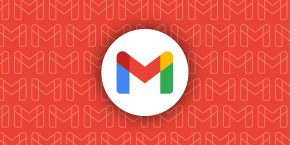Google Apps is a Google service that features several Web applications similar to traditional office suites. The services vary per edition but generally include Docs, Gmail, Calendar, Talk, Sites, Groups, Video, and Marketplace. Its popularity among students and educational institutions is rapidly increasing due to enhanced sharing features, accessibility and cost.
Google Apps for Education is just one edition that offers 25 GB of storage space per user for free through K-12 schools, colleges, and universities with up to 30,000 users. Forty-million active users currently use Google Apps, and according to US News & World Report, 61 of the Top 100 schools have switched to the educational service.
“Google Apps offers simple, powerful communication and collaboration tools for educational institutions of any size – all hosted by Google to minimize maintenance and reduce IT costs,” said Google Apps for Education on its website. “Google Apps is provided to educational institutions at no charge, and is hosted on the same enterprise-class infrastructure used by corporate and government customers.”
UC Berkeley announced Dec. 21 that they planned to make Google Apps for Education their new campus calendar and email system. “Operation Excellence” is a cost cutting initiative designed by the university to save $75 million annually. UC Berkeley currently offers their campus faculty, students and staff access to Microsoft software and Adobe Creative Suite free of charge. However, campus officials agreed to convert to Google Apps for Education in January 2012.
“This decision has been reached after an extensive analysis over the past few months that compared Google Apps for Education and Microsoft’s Office 365 offerings,” said UC Berkley in a statement regarding the transition. “While both products are feature rich and offer advantages over our current environment, the analysis concluded that the Google offering was the better overall fit for the campus at this time.”
Google Docs, which is equivalent to Microsoft Office 365, is the search engine’s office suite. Documents, spreadsheets, and presentations are creatable through the service, and they are importable through the web interface.
“Share documents, spreadsheets, and presentations. Collaborate in real-time with your team or with your whole school. You can publish final documents to the entire world, too,” Google explained. “Google Docs works on PC, Mac, and Linux computers, and supports popular formats such as .doc, .xls, .ppt, and .pdf. Files stored on Google Docs are always accessible and backed-up online.”
According to a Dec. 21 Google Docs’ blog post, the company introduced over 100 new features to Google Docs in 2011 to make “creating, sharing, and collaborating in the cloud an even better experience.”
The Google Docs team mentioned their favorite improvements in the blog post, as well, such as: a new version of Google presentations, comments in Google documents, a Google Docs Android app, comment-only access in documents, offline viewing, pivot tables in spreadsheets, pagination in documents, new printing options, page-level permissions in Google Sites, improved accessibility, and a new look across Google Docs and Sites.
The team also recently integrated Google Docs with the newest Google Plus feature by holding the first Docs ‘ Google plus Hangout on Nov. 17.
Google Apps for Education is making impressive leaps in recent years by adding multiple new features and expanding to a larger audience. Apart from converting UC Berkley in 2011, the service garnered the entire public school system of Oregon in 2010. Approximately 40,000 teachers, 25,000 professional staff members, and 561,000 students abandoned Microsoft Office 365 for Google Apps to reap an estimated savings of $1.5 million per year.
“The state saves money by not having to house and manage an email solution, but the savings are truly felt when the full Google Apps suite is used by a district,” explained ODE Chief IT Strategist Steve Nelson to Google.
The State University of New York System, which is the largest comprehensive system of universities, colleges, and community colleges in the world with a total enrollment of 465,000 students and 1.1 million in adult education, also abandoned Microsoft Office for Google Apps. Sixty-four campuses across the state now use Docs, Gmail and other Google Apps’ services. Only this time, the conversion had nothing to do with saving money.
“We didn’t switch to Gmail because of the cost. It just seems like a much more complete package,” said SUNY Associate Vice President of ITS Mark Reed to Google.
New York University, Arizona State University, and the University of Texas at Austin are a few other educational institutions to favor Google Apps over Microsoft Office in recent years. For a more comprehensive list of schools that currently use Google Apps for Education, go to the company’s website for industry customers.
FTC: We use income earning auto affiliate links. More.



Comments